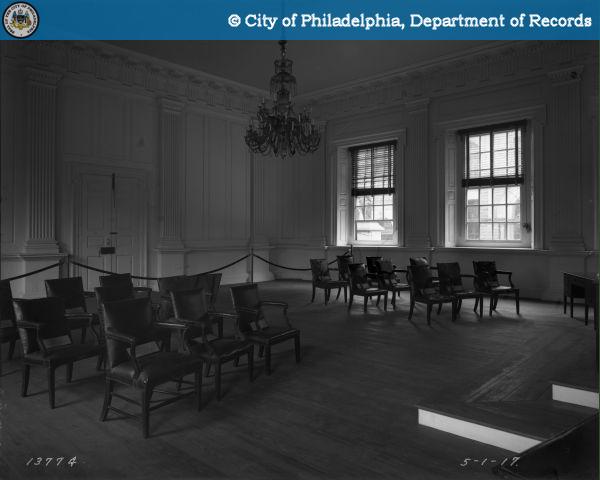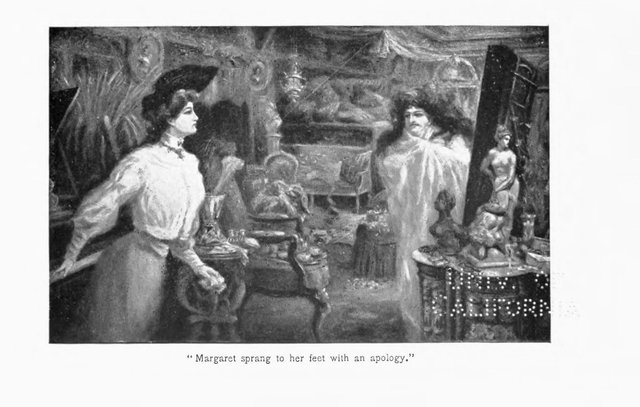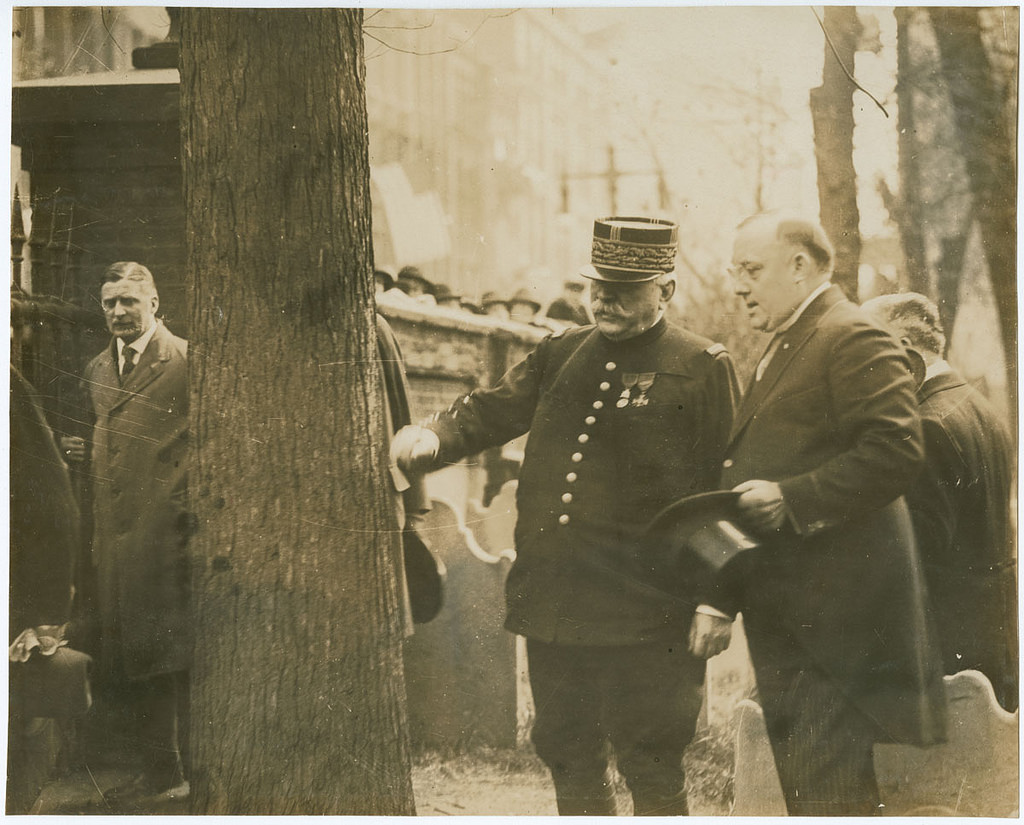On January 12, 1918, Horace Thompson Carpenter was fired. For two years he had been the superintendent of Independence Hall, accepting the annual salary of $800 (worth around $12,000—just below the poverty line—today) “out of pure patriotism and enthusiasm for art and history.” Shortly before his firing, Carpenter had received a raise of $200, but now the city government claimed that they were eliminating his position to save the citizens the burden of that $1000 per year. The Philadelphia Inquirer noted that it would take the elimination of 165 positions at that salary to make a difference to each individual's tax rate. Carpenter's duties, which had included conservation and restoration of Independence Hall, were transferred to Wilfred Jordan, the Hall's curator.[1]

The Declaration Chamber of Independence Hall, photographed in 1917 during Carpenter's tenure. Photo from the City of Philadelphia Department of Records via PhillyHistory.Org
"A Patriot and an Expert"
Carpenter, an illustrator by trade who had been a protege of Thomas Eakins, had taken the job in response to “a public appeal for the rescue of Independence Hall from the wretched state of dirt and deterioration into which it had fallen,” made by Frank M. Ritter, former president of the Civil Service Commission. Ritter reportedly said “What is wanted is a $5000 man for $800...he must be a patriot and an expert in American art, history and literature.”[1]

An Illustration by Carpenter from Fair Margaret: A Portrait by F. Marion Crawford. Image file from Project Gutenberg
"Smith-Vare Forces"
The early 20th century was a frightening time to be a public employee in Philadelphia. The city was in the clutches of a ruthless political machine run by William Vare, United States Congressman and Senator-elect (though he was not allowed to take his seat in the senate due to corruption charges).[2] In addition the political violence overtly fostered by Vare and his allies, public servants' employment was often determined by the whims of those in power, such as Thomas B. Smith, mayor from 1916 to 1920.
It is difficult to be certain what role Vare and Smith personally played in much of the petty politics of the 1910s but The Philadelphia Inquirer attributed much of it to their influence. On the occasion of Carpenter's firing, for instance, the Inquirer noted that “Mayor Smith was absent in Boston, but the power that controlled the ax continued to work in his absence.”[1]

Photo of Mayor Smith (right) visiting the grave of Benjamin Franklin with Marshal Joseph Joffre in 1917.
Photo from the Library Company of Philadelphia
"Withholds Names of Men Slated for Decapitation Until He Acts"
Carpenter was not the only employee at Independence Hall to feel the sting of that “ax.” Two years later in 1920, there were a spate of firings for such dereliction of duty as “smoking on the steps of Independence Hall rather than caring for the precious exhibits within.”[3] Ironically, when the men fired from their posts in 1920 fought back and made counter-complaints against Horace Carpenter, who had been reinstated as superintendent sometime in the intervening years.[4]
Carpenter would remain as a superintendent and then curator at Independence Hall until shortly before his death in 1947, continuing his work as an illustrator and portrait painter on the side.[5]
100% of the SBD rewards from this #explore1918 post will support the Philadelphia History Initiative @phillyhistory. This crypto-experiment conducted by graduate courses at Temple University's Center for Public History and MLA Program, is exploring history and empowering education. Click here to learn more.
Notes
[1] “$5000 Man in $1000 City Job is Ousted. Smith-Vare Forces Drop H. T. Carpenter, Independence Hall Superintendent” The Philadelphia Inquirer (Philadelphia, Pennsylvania) January 13, 1918: Page 2.
[2] http://bioguide.congress.gov/scripts/biodisplay.pl?index=V000071
[3] “Independence Hall Job Lost through Smoking ; Employees Warned to Give More Attention to Exhibits” The Philadelphia Inquirer (Philadelphia, Pennsylvania) August 24, 1920: Page 1.
[4] “City Hall Ax Again Hits Vare Faithful ; Councilman Hall to Have One Less Supporter on” The Philadelphia Inquirer (Philadelphia, Pennsylvania) August 29, 1920: Page 3.
[5] Syracuse, N.Y. Herald-Journal, issue of May 21, 1947, p. 2. Some notable portraits by Carpenter are those of John Dickinson (1921), Charles Nisbet (1929), and Rev. Louis Cope Washburn (1935).
Ugh, boss politics. Mayor Smooth was also charged with corruption and cronyism later that year for awarding a contract to build a playground to some of his buds. Philadelphia: maybe possibly as bad as Philadelphians say it is?
Downvoting a post can decrease pending rewards and make it less visible. Common reasons:
Submit
It's interesting that they would let someone named Horace Thomas Carpenter have that position at NPS. You wouldn't want to confuse this institution with Carpenters' Hall! #badpun
Downvoting a post can decrease pending rewards and make it less visible. Common reasons:
Submit
Your calculator says $800 was "worth around $12,000—just below the poverty line." And in 1918, $1000, according to this calculator would have the purchasing power of about $15,700 today - not a whole heck of a lot. But what did it take to get by 100 years ago?
Downvoting a post can decrease pending rewards and make it less visible. Common reasons:
Submit